In an age of advanced military technology, where tanks, aircraft, and drones dominate modern warfare, it might seem puzzling that horses continue to play a prominent role in military ceremonies worldwide. Yet these magnificent animals remain integral to ceremonial units in many of the world’s most sophisticated armed forces. From the Household Cavalry of the United Kingdom to the Carabinieri of Italy, ceremonial mounted units are not mere historical holdovers but living traditions that serve important contemporary functions. This enduring partnership between soldiers and horses represents a fascinating intersection of military heritage, practical functionality, and symbolic power that continues to captivate both military personnel and civilians alike.
The Historical Significance of Military Horses

The relationship between horses and military forces stretches back thousands of years, fundamentally shaping warfare throughout human history. From ancient charioteers to medieval knights and cavalry charges of the 19th century, horses were the primary military vehicle for most of recorded history. This deep historical connection means that horses symbolize millennia of military tradition, carrying the weight of countless battles and campaigns in their ceremonial presence. Military organizations, which deeply value tradition and historical continuity, maintain mounted units as living links to their institutional heritage. When a modern cavalryman dons ceremonial dress and mounts a horse, they embody a direct connection to generations of soldiers who served before them, creating a powerful sense of historical continuity that few other military traditions can match.
Ceremonial Impact and Visual Grandeur
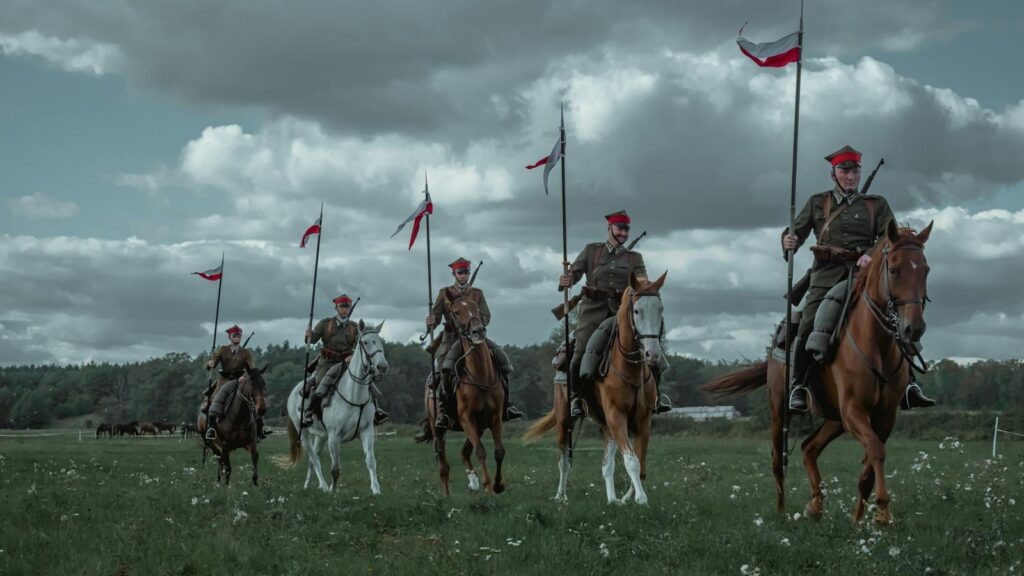
Few military displays match the visual splendor and emotional impact of mounted ceremonial units. The combination of precisely trained horses, immaculately turned-out riders in historical uniforms, gleaming tack, and synchronized movement creates a spectacle of unparalleled grandeur that mechanized alternatives simply cannot replicate. The natural majesty of horses, standing approximately 16 hands high in most ceremonial units, adds a living, breathing dimension to military pageantry that resonates deeply with observers. The rhythmic sound of hoofbeats on pavement, the controlled power of these large animals, and their elegant carriage all contribute to creating truly memorable ceremonial moments. This powerful aesthetic impact explains why mounted units are frequently chosen for the most significant state occasions, from presidential inaugurations to royal coronations and state funerals.
Enhanced Ceremonial Presence and Elevation
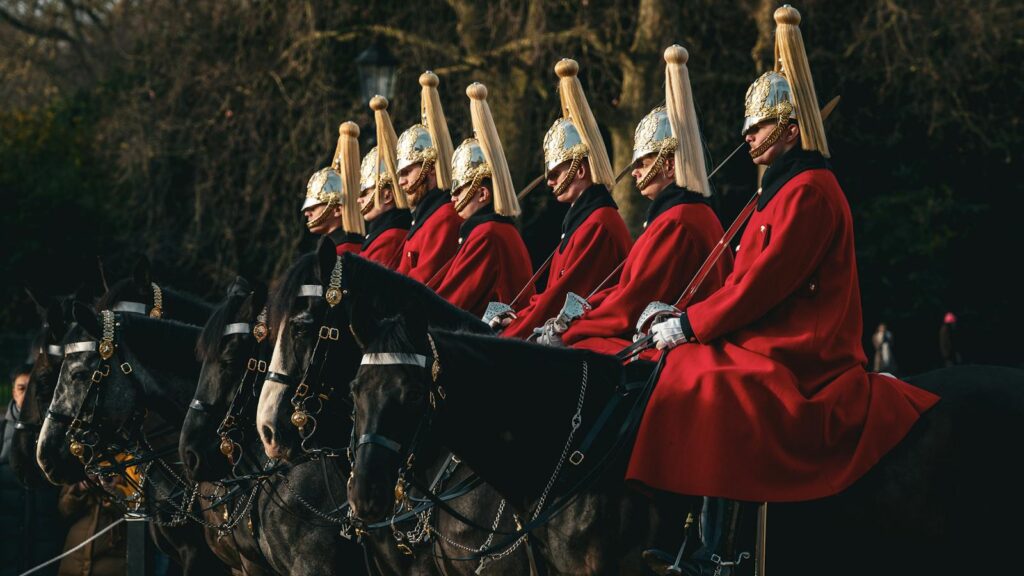
Mounted soldiers literally and figuratively stand above the crowd, creating a commanding presence that serves practical ceremonial functions. A soldier on horseback achieves greater visibility in public gatherings, allowing them to be seen from greater distances and by more people than dismounted personnel. This elevation also creates a natural authority and command presence that serves ceremonial and occasional crowd control functions. In presidential inaugurations, royal processions, and state funerals, mounted units provide both protection and ceremonial distinction by forming visible, mobile boundaries that define ceremonial space. The added height and presence of mounted units allow them to project ceremonial authority while maintaining an elegant, traditional appearance that enhances rather than disrupts formal proceedings.
Symbolic Representation of National Identity
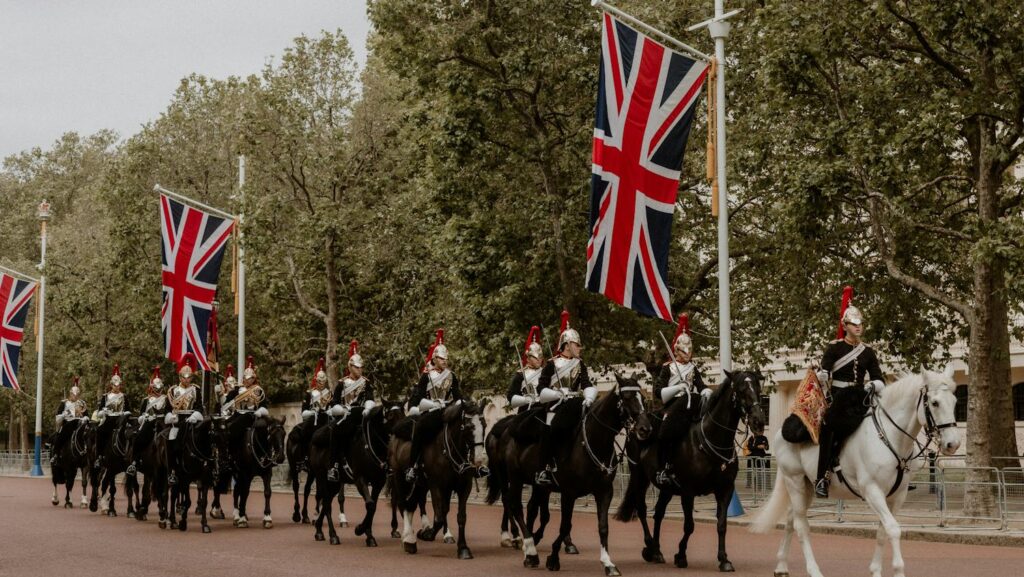
Ceremonial mounted units often serve as living symbols of national identity and heritage, instantly recognizable as representatives of their nations. The British Household Cavalry, the Royal Canadian Mounted Police, the U.S. Horse Cavalry Detachment, and many other mounted units have become iconic representations of their respective countries, featured in tourism materials and recognized worldwide. These units often maintain distinctive uniforms, equipment, and traditions that have become inextricably linked with national identity. Many of these traditions date back centuries and represent unique cultural heritage that countries are eager to preserve and showcase. For instance, the scarlet tunics of the Royal Canadian Mounted Police and the plumed helmets of the British Household Cavalry have transcended their military origins to become national symbols, instantly recognizable around the world.
The Practical Advantages in Ceremony and Crowd Management
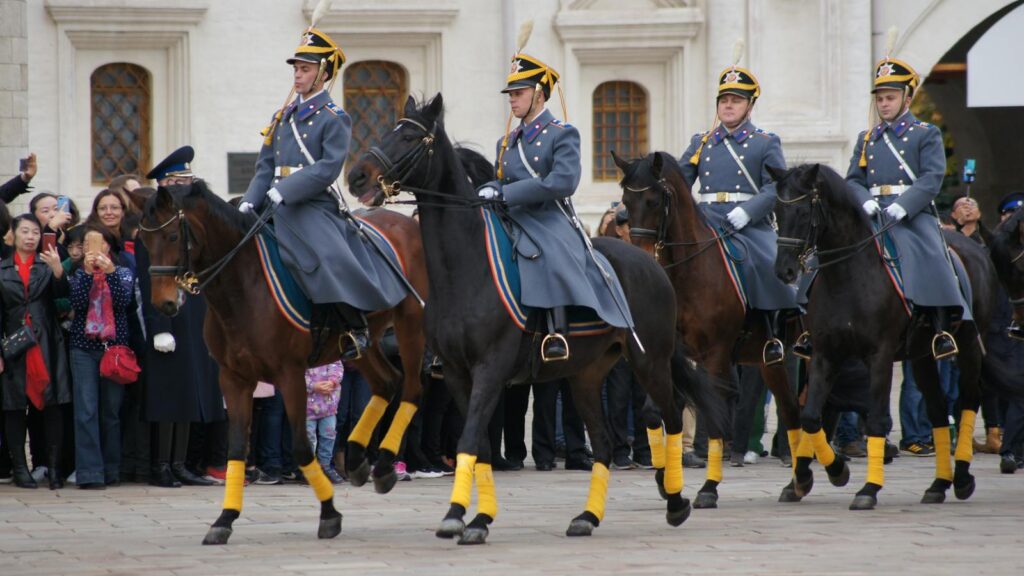
Beyond their ceremonial value, mounted units offer practical advantages in certain operational contexts, particularly during major public events. Mounted officers have superior visibility over crowds, allowing them to monitor large gatherings effectively while maintaining a ceremonial rather than threatening presence. The natural height advantage of being on horseback enables officers to observe developing situations from a vantage point impossible for those on foot, making them particularly effective at large public ceremonies. Horses can also navigate certain urban environments more effectively than vehicles during crowded events, slipping through spaces too narrow for cars while moving faster than personnel on foot. Additionally, mounted units can rapidly transition from ceremonial formations to more practical crowd management configurations when necessary, providing a dual capability that few other ceremonial elements can match.
Public Relations and Military-Civilian Connection

Ceremonial mounted units serve as powerful ambassadors between military institutions and the general public, fostering positive relationships in ways mechanized units cannot match. The natural appeal of horses creates immediate engagement opportunities, drawing crowds and generating positive interactions at public events, parades, and demonstrations. Unlike tanks or aircraft, horses elicit an emotional connection with audiences of all ages, creating memorable impressions that help humanize military organizations. This public relations value extends to recruitment efforts, as the pageantry and tradition of mounted units often attract interest in military service more broadly. Many military organizations recognize this unique capacity for public engagement and specifically deploy their mounted units to communities throughout their nations as goodwill ambassadors.
Preservation of Specialized Military Skills
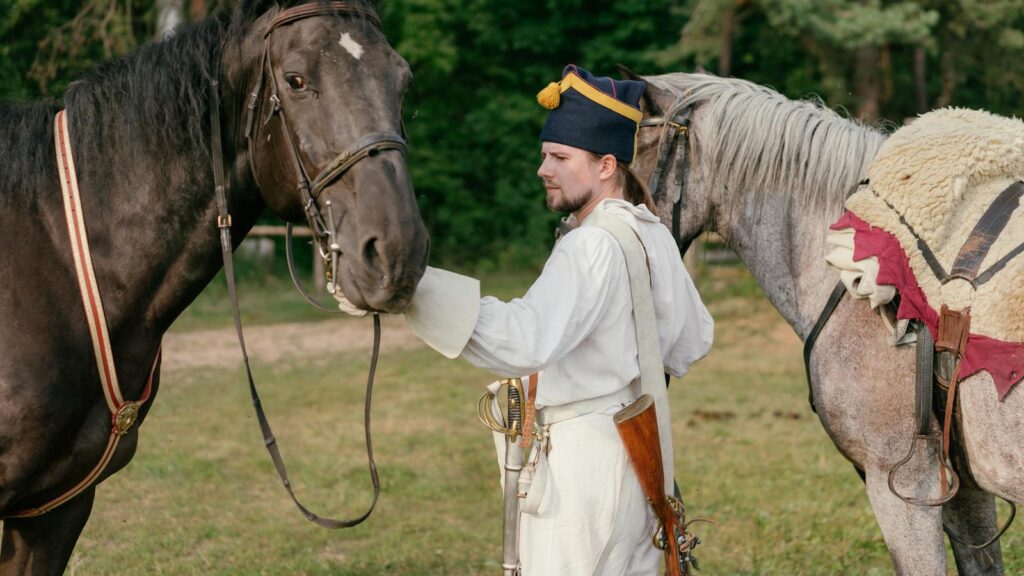
Maintaining ceremonial mounted units preserves specialized horsemanship skills that might otherwise disappear from military traditions entirely. Despite mechanization, the skills required to properly care for, train, and ride horses in ceremonial formations require significant expertise that takes years to develop. These specialized abilities include not only riding techniques but also horse care, tack maintenance, stable management, and the ability to train horses for the unique demands of military ceremonies. Military organizations recognize the value in preserving these specialized skill sets as part of their institutional knowledge. In some countries, such as Chile, Mongolia, and certain mountain units worldwide, horse-mounted operations maintain operational relevance in specific terrains, making ceremonial units a repository of potentially deployable skills.
The Rigorous Selection and Training Process
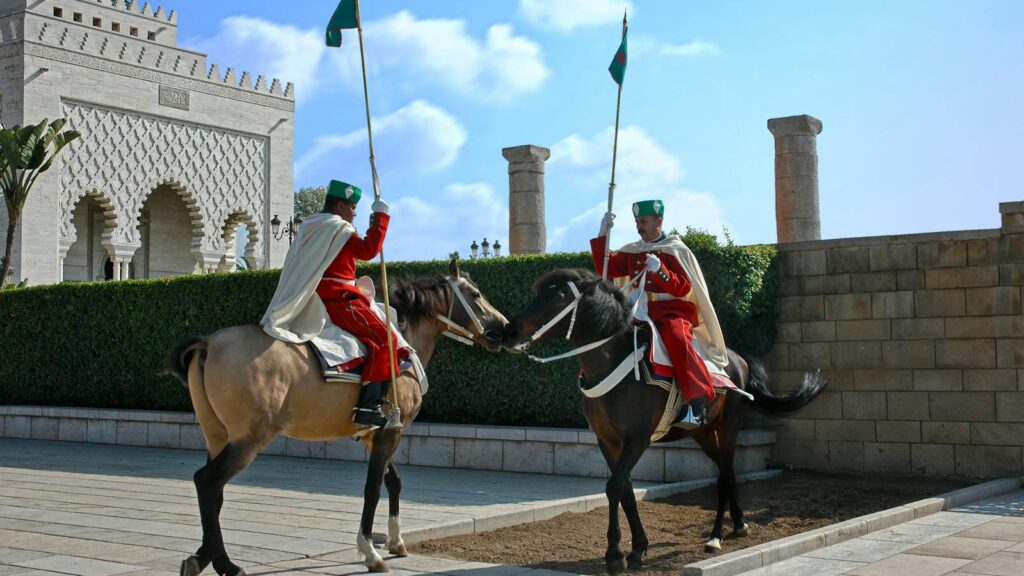
The horses used in ceremonial military units undergo extraordinarily selective breeding and rigorous training processes that few civilian horses experience. Military mounts are typically chosen for specific physical characteristics including size, color (often seeking uniformity within units), temperament, and soundness for the demanding work of ceremonies. Most ceremonial units prefer horses standing between 16 and 17 hands high, with substantial bone and presence, yet possessing the temperament to remain calm amid gunfire, music, flags, and crowds. Training these horses requires years of progressive conditioning, beginning with basic handling and advancing to specialized drill maneuvers, desensitization to battlefield noises, and the ability to stand perfectly still for extended periods. This intensive selection and training process represents a significant institutional investment that militaries continue to make, underscoring the value they place on these ceremonial capabilities.
Notable Ceremonial Mounted Units Worldwide
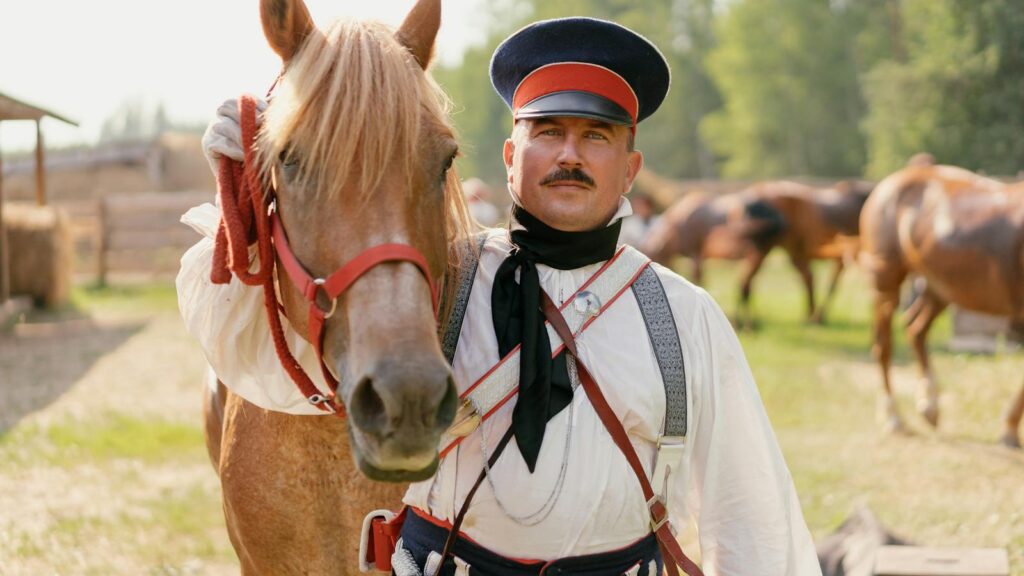
Around the world, numerous prestigious mounted units maintain centuries-old traditions while adapting to contemporary ceremonial needs. The British Household Cavalry, comprising the Life Guards and Blues and Royals, performs daily ceremonial duties at Horse Guards Parade and major royal ceremonies throughout the year. The United States military maintains several notable mounted units, including the Caisson Platoon of the 3rd U.S. Infantry Regiment (The Old Guard), which provides horses for military funerals at Arlington National Cemetery. The French Republican Guard includes a cavalry regiment that performs escort duties for the President of France and foreign dignitaries during state visits. Other renowned units include the Spanish Royal Guard, the Canadian Governor General’s Horse Guards, and the Indian President’s Bodyguard, each maintaining unique traditions and ceremonial practices that reflect their national heritage while serving contemporary ceremonial functions.
Economic and Tourism Considerations
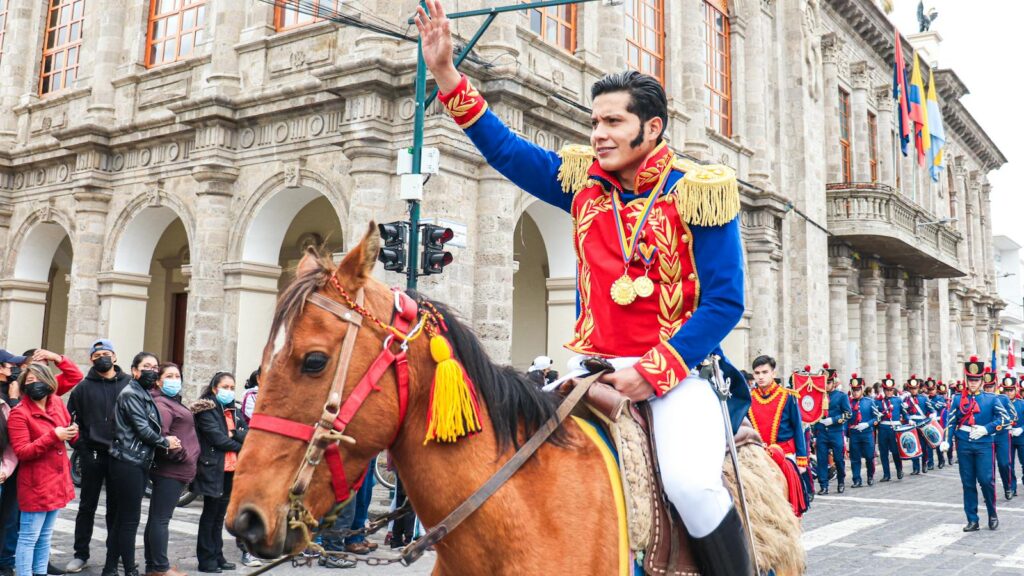
The ceremonial value of mounted military units often translates directly into economic benefits through tourism and related industries. Events featuring ceremonial mounted units, such as Trooping the Colour in London or the Musical Ride performances of the Royal Canadian Mounted Police, draw thousands of tourists specifically to witness these displays. These visitors generate significant revenue for local economies through accommodation, dining, and purchasing related merchandise. The predictable schedules of certain mounted ceremonies, such as the Changing of the Guard ceremonies, create reliable tourism attractions that cities and tour operators build into their marketing strategies. Additionally, the distinctive imagery of mounted units frequently appears in tourism marketing materials, serving as powerful visual shorthand for national traditions and heritage.
Technological Integration with Tradition

Modern ceremonial mounted units have skillfully integrated contemporary technology and practices while maintaining their traditional appearance and functions. Behind the scenes, many units employ advanced veterinary care, nutrition science, and training methodologies to maintain the health and performance of their horses at standards unimaginable in earlier centuries. Modern synthetic materials may be incorporated into certain equipment components while maintaining traditional appearances, improving durability and reducing maintenance requirements. Communications systems allow for more precise coordination of complex ceremonial movements, though these remain discreetly hidden from public view to maintain the traditional aesthetic. This balanced approach to innovation allows mounted units to operate more efficiently while preserving the authentic historical appearance that makes them so valued for ceremonial purposes.
The Future of Ceremonial Mounted Units
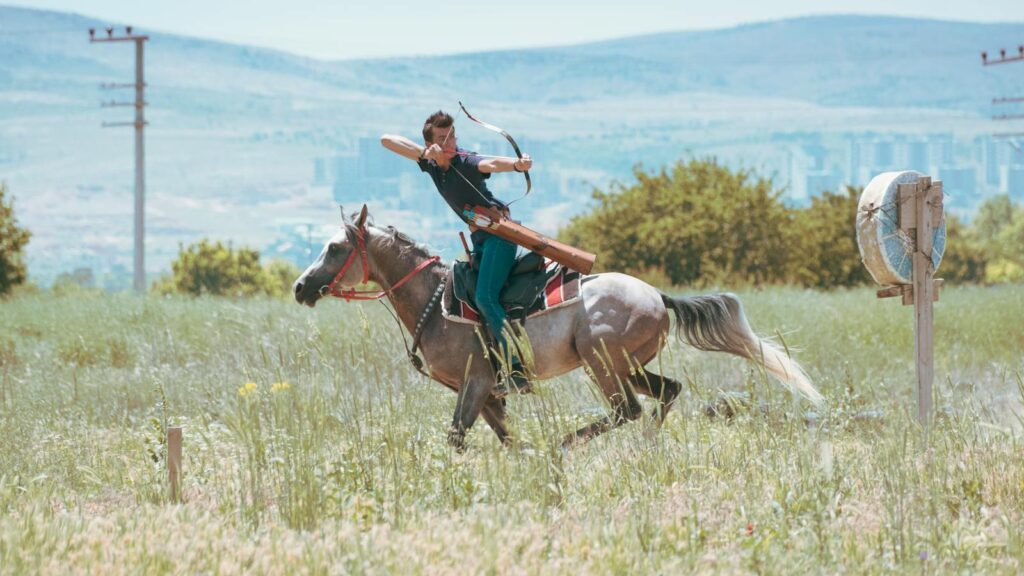
Despite occasional budget pressures and questions about their relevance, ceremonial mounted units appear positioned to maintain their role in military traditions for the foreseeable future. Their unique combination of historical significance, practical ceremonial advantages, and public relations value continues to justify their maintenance in military organizations worldwide. While some smaller units have faced consolidation or reduction in recent decades, the most prominent ceremonial mounted units continue to receive strong institutional support, recognized as irreplaceable assets in national ceremony and tradition. Many units have adapted to contemporary realities by expanding their public engagement functions while maintaining their core ceremonial capabilities. The enduring public fascination with these units, combined with their symbolic importance to military institutions themselves, suggests they will remain vibrant elements of military ceremony well into the future, continuing a partnership between soldiers and horses that has spanned millennia.
Conclusion
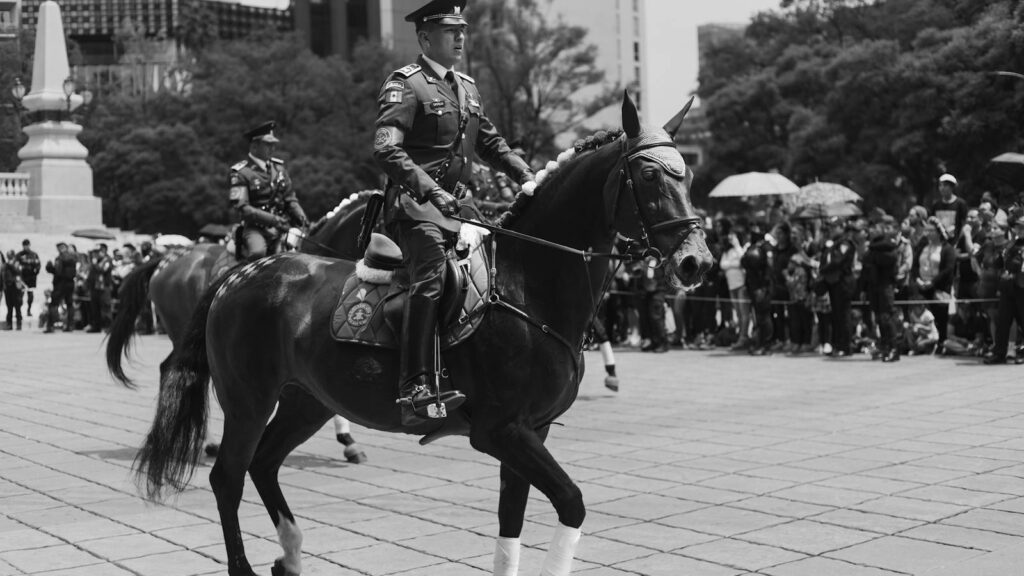
The continued use of horses in ceremonial military units represents far more than mere tradition or historical reenactment. These magnificent animals and the soldiers who ride them fulfill unique practical and symbolic functions that remain relevant in our modern age. From their unmatched ceremonial presence to their role as ambassadors between military institutions and the public, mounted units deliver capabilities that mechanized alternatives simply cannot replicate. As living links to military heritage, embodiments of national identity, and performers of practical ceremonial functions, these units occupy a special place in military organizations worldwide. Their endurance in an age of technological warfare speaks to something fundamental about human connection to tradition, the emotional power of ceremonial pageantry, and the timeless partnership between humans and horses that continues to captivate us across centuries.







